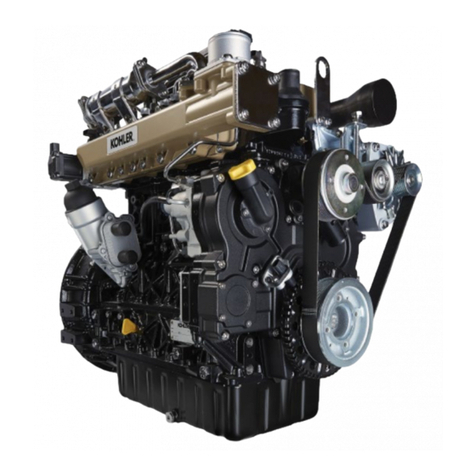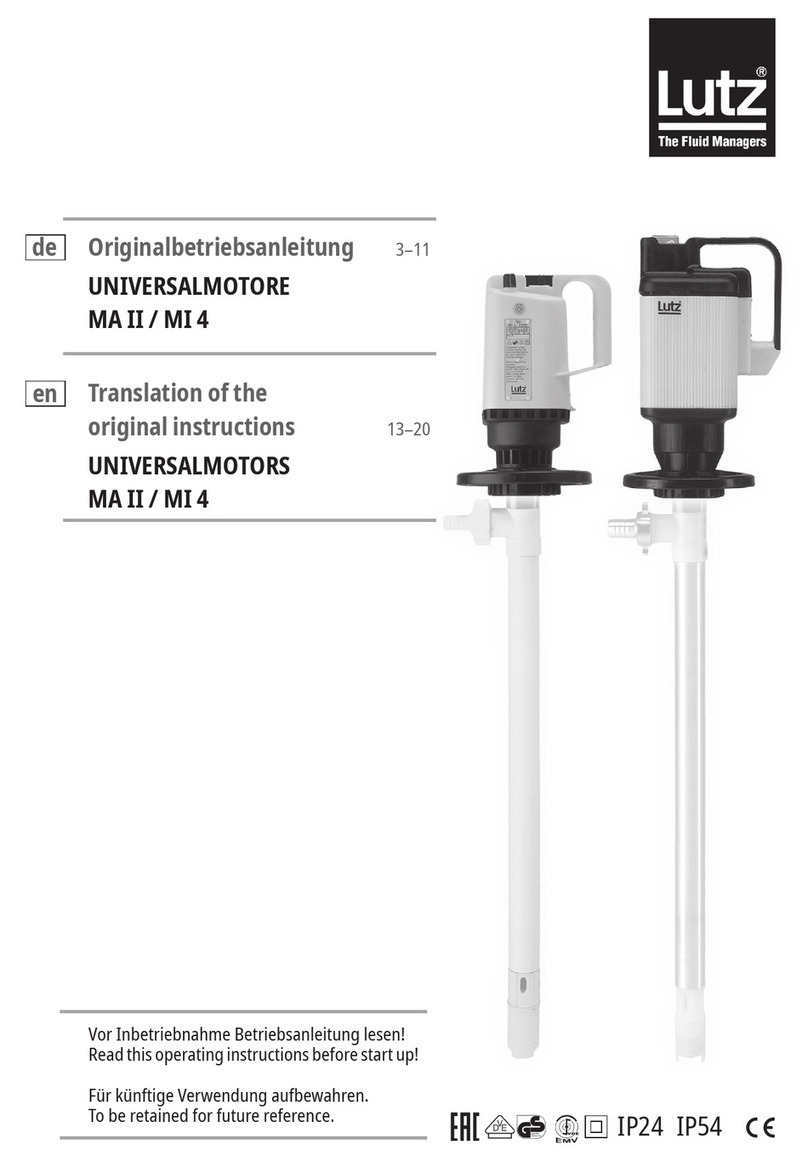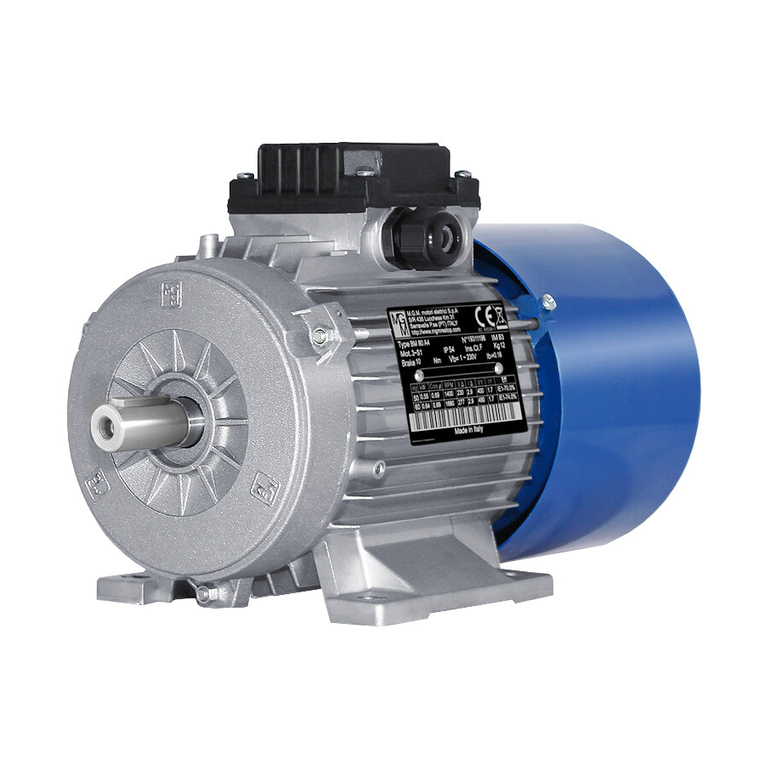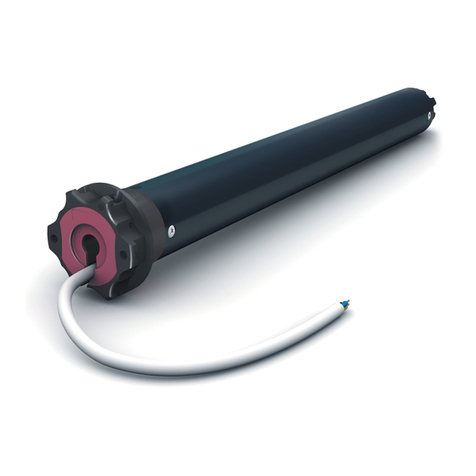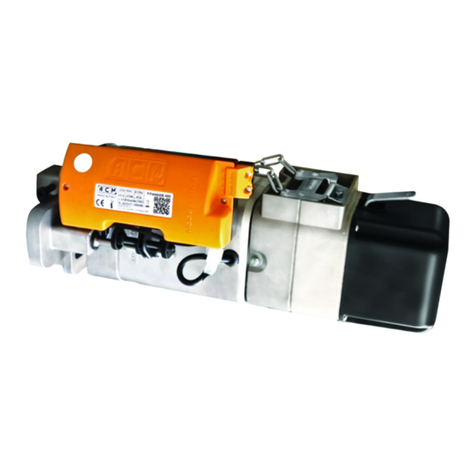CRAFTOP GE160 User manual

Owner’s Manual
Gasoline Engine
GE160,GE200,GE210
EXPERTS
IN EQUIPMENTS OF
GARDENING AND AGRICULTURE
ENGLISH
VERSION: 00-202110

We thank you for buying CRAFTOP Gasoline Engine
This gasoline engine provides advanced technology and powerful energy in incorporating many convenient features
for you to perform your daily work.
Before attempting to use this gasoline engine, please read this manual carefully until you completely
understand and can follow all safety rules, precautions, operating and maintenance instructions. It will help
you both to become more familiar with this gasoline engine and to recognize and avoid situations that could endanger
you and others. Careless or improper use may cause serious or even fatal injury!
If you have any question about your gasoline engine and this manual, please contact your local authorized dealer or
service center. They always welcome your questions, suggestions, and constructive criticism.
We hope you enjoy this gasoline engine and wish you many years of safe and enjoyable work with it.
CRAFTOP CANADA LTD.

|-1-
Table of contents
Guide to use this manual .............................................1
Product overview..........................................................3
Technical specification .................................................6
Safety precautions and instructions .............................7
Assembly....................................................................11
Engine oil....................................................................11
Fuel and fueling..........................................................12
Gearbox lubrication ....................................................13
Air filter .......................................................................14
Preparation................................................................. 14
Start and stop the engine ...........................................15
Operation....................................................................16
Exhaust control system ..............................................17
Maintenance and care................................................18
Repair.........................................................................22
Storage....................................................................... 22
Disposal......................................................................24
Troubleshooting guide................................................25
Electrical diagram.......................................................30
Guide to use this manual
This Owner’s Manual refers to a CRAFTOP gasoline
engine, also called a machine and/or product in this
Owner’s Manual.
All information, specifications, descriptions and
illustrations in this manual are as accurate as known at
the time of publication, but are subject to change
without notice. Due to ongoing product development,
there may be difference between your machine and the
information in this manual. No legal obligations or
commitments can be delivered from the information,
specifications, descriptions, or illustrations in this
manual.
Illustrations are only for orientation and are merely used
to help explain the text descriptions and instructions.
Illustrations may include optional equipment and
accessories, and may not include all standard
equipment.
Some signs or symbols on the machine may be a little
different refer to special certification requirements for
certain markets.
Any technical modifications to the machine that were
introduced after the editorial deadline please consult
your local dealer for more supplementary information.
All safety precautions and instructions described in this
manual should be observed during operation of the
gasoline engine, and all applicable federal, state and
local safety regulations, standards, and ordinances
should be observed as well.
Do not sell, lend or rent the machine without this
owner’s manual. Always be sure to include this owner’s
manual together with this machine, and make sure that
anyone using it understands the information contained
in this manual.
Signs and symbols in this manual
DANGER
Texts with this symbol contain information regarding
hazardous situations which will cause death or severe
injures if not avoided.
WARNING
Texts with this symbol contain information regarding
hazardous situations which could cause death or
severe injures if not avoided.
CAUTION
Texts with this symbol contain information regarding
hazardous situations which could cause minor or
moderate injures if not avoided.
NOTICE
Texts with this symbol information regarding situation
which could cause gasoline engine damage if not
avoided.
information
Texts with this symbol contain supplementary
information.
Waning or Alert!
Special safety precautions must be
observed when working with this
machine because it has high speed
rotation parts, uses flammable fuel,
and exhausts poisonous fumes.
Read and understand the
Owner’s Manual.
Read this Owner’s Manual
carefully, make sure that you
completely understand and can
follow all safety rules, precautions,
operating and maintenance
instructions before attempting to
use this machine, failure to do so
may cause serious or even fatal
injury!
Wear proper clothing.
Eye and ear protection required.
Always wear appropriate safety
goggles or safety glasses with side
shields, and ear plugs or ear
mufflers as well when operating this
machine.

|-2-
Hair protection required.
Operator who has long hair should
tie up and confine long hair with a
hair net, cap, or hard hat for
instance.
Respiratory protection required.
Wear proper respiratory protection
to protect you from chemical
solvents, aerosols, oils, mold, and
other more harmful airborne
particles or allergens that may go
unseen.
Hands protection.
Always wear appropriate gloves
when you handle chemical
detergent or operate gasoline
engine.
Foot protection required.
Wear shoes or boots with anti-slip
soles in your working area.
Fire hazard.
Risk of fire.
Flammable material or their fumes
may catch fire easily if near heat,
flames or sparks.
No smoking.
Do not smoke in this area.
Toxic Fumes.
Chemicals contained in the engine
exhausts can cause cancer and
birth defects and other reproductive
harm.
Poisonous.
The skull and crossbones symbol
means the product is poisonous or
has/produce poisonous material.
Licking, eating, drinking, or smelling
a substance marked with this
symbol can make you very sick or
even cause death.
Risk of Asphyxiation.
This engine exhausts carbon
monoxide, an odorless, colorless
poison gas. Breathing carbon
monoxide can cause nausea,
fainting or even death. Only use this
machine in a well ventilated outside
area.
Warning of hot surface.
Contact may cause burn.
Do not touch!
Signs and symbols on the machine
For the purpose of safety operation and maintenance,
the meanings of signs and symbols may be attached to
or embossed on the machine.
The port to top up fuel.
Position: Fuel cap
The port to top up engine oil.
Position: Oil cap
Choke control.
Choke closed.
“Cold start” position.
Choke control.
Choke open.
“Run” position.

|-3-
Product overview

|-4-
1 Muffler
2 Air filter
3 Fuel tank cap
4 Fuel tank
5 Recoil starter handle
6 Engine switch
7 Engine oil drain plug
8 Engine oil cap
9 Power takeoff shaft
10 Reduction gear oil cap
11 Throttle lever
12 Choke lever
13 Fuel valve
14 Spark plug
15 Carburetor
Control connection of remote distance (option)
The holes in levers of both the choke and throttle valve are used for mounting optioned steel wires, the illustrations
below show how to mount a solid steel wire and a meshed steel wire. If choosing a meshed steel wire, a return spring
is needed.
If necessary you may unscrew damping nut on the throttle valve lever slightly when controlling the throttle valve by a
remote-controlled steel wire.
Accessory Options:
A
B
C
D
E

|-5-
F
G
Remote-Controlled Throttle:
J
H
Remote-Controlled Choke:
K
L
A. 4mm screw
B. Wire holder
C. Throttle lever
D. 5mm clip ring
E. Wire
F. Flexible wire core mounting
G. Solid wire core mounting
H. Return spring
J. Throttle lever friction nut
K. Wire holder
L. Choke lever

|-6-
Technical specification
Model GE160 GE200 GE210
Description Unit Specification
Product dimension mm 365x320x330 365x320x330 365x320x330
Package dimension mm 390x330x380 390x330x380 390x330x380
Net weight kg 15 15 15
Gross weight kg 16 17 17
Application temperature °C -5°C to 45°C -5°C to 45°C -5°C to 45°C
Engine type single cylinder, forced air cooling, 4-stroke,OHV gasoline engine
Rated Power (output) kW/rpm 3.1/3600 3.8/3600 4.2/3600
Maximum torque Nm/rpm 8.8/2500 11/2500 12/2500
Fuel consumption g/kW.h ≤395 ≤395 ≤395
Oil consumption g/kW.h ≤6.5 ≤6.5 ≤6.5
Lowest idling speed rpm 1600±100
Noise dB(A) 105 105 105
Cylinder diameter mm 68 68 70
Piston journey mm 45 54 55
Displacement cc 163 196 212
Fuel Tank Capacity L 3.6 3.6 3.6
Oil Capacity L 0.6 0.6 0.6
Compress ratio 8.5:1
Lubrication mode Force Splash
Start mode Recoil start
Oil specification SAE10W-30
Fuel specification Unleaded Gasoline
Ignition system Transistorized Magneto Ignition (T.C.I)
Output direction of power shaft Counterclockwise
Spark plug type F7TC
This engine is equipped with a low oil level sensor that shuts down the engine automatically when the oil level drops
below a specified level. If the engine shuts down by itself and the fuel tank has enough gasoline, check engine oil
level.
information
Technical data vary with type of engine. Specifications, descriptions and illustrations in this manual are as accurate as
known at the time of publication, but are subject to change without notice.

|-7-
Safety precautions and instructions
Special safety precautions must be
observed when working with this
machine because it has high speed
rotation parts, uses flammable fuel,
produces high pressure water, and
exhausts poisonous fumes.
Before attempting to use this gasoline
engine, please read this manual
carefully until you completely
understand and can follow all safety
rules, precautions, operating and
maintenance instructions. Careless or
improper use may damage the
machine and may cause serious or
even fatal injury!
Safety precautions
DANGER
•
Because this gasoline engine has high speed rotation
parts, uses flammable fuel and exhausts poisonous
fumes, some special precautions must be observed
to reduce the risk of accident and personal injury.
Careless or improper use may cause serious or even
fatal injury.
•
Rotating parts can entangle hair, hands, clothing, feet
and/or accessories. Traumatic amputation or severe
laceration can result.
•
Gasoline is an extremely flammable fuel. If spilled
and ignited by a spark or other ignition source, it can
cause fire and serious burn injury or property damage.
Use extreme caution when handling gasoline.
Combustible fuel vapor may escape from the fuel
system or container during fueling operations. Do not
smoke or bring any fire or flame near the fuel or the
machine.
•
Do not operate this machine indoors or in
inadequately ventilated areas. DO not allow exhaust
fumes to enter a confined area through windows,
doors, vents or other openings. Engine exhaust
contains poisonous emissions and can cause serious
injury or death.
WARNING
•
Observe all applicable local safety regulations,
standards and ordinances.
•
Running engines produce heat. Severe burns can
occur on contact. Combustible material can catch fire
on contact.
•
The noise emitted from this machine may be
restricted to certain times by national or local
regulations.
•
Minors should never be allowed to use this gasoline
engine. Do not allow other persons near the gasoline
engine when starting or operating. Keep bystanders,
especially children, and animals out of the work area
and keep a safe distance. Close supervision of
children is necessary to ensure that they do not enter
the work area or play with the machine.
•
Never let your gasoline engine run unattended. When
it is not in use (e.g., during a work break), shut it off
and make sure that unauthorized persons do not use
it.
•
The person who use this gasoline engine must be in
good physical condition and mental health, and not
under the influence of alcohol and drugs. Never use
this gasoline engine when you are fatigued, sick, or
upset. If you feel tired, take a break.
•
The components of this machine may generate an
electromagnetic field during operation, which may
interfere with some pacemakers. To reduce the risk of
serious or fatal injury, persons with pacemakers
should consult with their physician and the
pacemaker manufacturer before operating this
machine. In the absence of such information,
CRAFTOP does not recommend the use of this
machine by anyone who has a pacemaker.
•
The owner of this machine is responsible for avoiding
injury to third parties or damage to their property.
CAUTION
Prolonged exposure to cold and/or vibration may result
in injury. Read and follow all safety and operation
instructions to minimize risk of injury. Failure to follow
instructions may result in painful wrist/hand/arm
injuries.
Raynaud’s Phenomenon may affect the fingers of
certain individual if a person is exposed to vibration and
cold. Exposure to vibration and cold may cause tingling
and burning sensations, followed by loss of color and
numbness in the fingers. The following precautions are
strongly recommended:
•
Keep your body warm, especially the head, neck,
hands, wrists, ankles and feet, ,.
•
Maintain good blood circulation by performing
vigorous arm exercises during frequent work breaks.
•
Limit the hours of operation, have a rest when you
feel tired or fatigued.
•
If you experience discomfort, redness, and swelling of
the fingers followed by whitening and loss of feeling,
consult your physician before continuing exposing
yourself to cold and vibration.
Overusing the muscles and tendons of the fingers,
hands, arms, and shoulders may cause soreness,
swelling, numbness, weakness, and extreme pain in
those areas.
•
Avoid using your wrist in a bent, extended, or twisted
posture. Instead, try to maintain a straight wrist
position. Also, when grasping, use your whole hand,
not just the thumb and index finger.
•
Take periodic breaks to minimize repetition and let
your hands have a rest.
•
Reduce the speed and force with which you do the
repetitive movement.
•
Do exercise to strengthen your hands and arm
muscles.
•
Immediately stop using the machine and other power
tools, and consult a doctor if you feel tingling,
numbness, or pain in the fingers, hands, wrists, or
arms.

|-8-
Clothing and PPE
WARNING
You must wear proper clothing and approved personal
protective equipments (PPE) whenever you use a
gasoline engine.
Eye and ear protection required.
Always wear appropriate safety
goggles or safety glasses with side
shields, and ear plugs or ear
mufflers as well when operating this
machine.
Respiratory protection required.
Wear proper respiratory protection
to protect you from chemical
solvents, aerosols, oils, mold, and
other more harmful airborne
particles or allergens that may go
unseen.
Hair protection required.
Operator who has long hair should
tie up tie up and confine long hair
with a hair net, cap, or hard hat for
instance.
Hands protection.
Always wear appropriate gloves
when you operate gasoline engine.
Proper clothing.
Clothing must be snug-fitting but
allow complete freedom of your
movements.
Do not wear loose clothing, jewelry,
scarf, necktie, or anything that could
get caught in moving pats of the
machine.
Foot protection.
Wear shoes or boots with anti-slip
soles in your working area.
Personal protective equipments can not eliminate the
risk of injury, but it will reduce the degree of injury if an
accident does happen. Ask your local dealer for help in
choosing the right equipments.
Long-time or continuous exposure to high noise levels
may cause permanent hearing impairment. Always
wear approved hearing protection when operating a
gasoline engine.
Handle your gasoline engine safely
WARNING
This gasoline engine is to be used only by qualified
operators. Minors and untrained persons should never
be allowed to use this machine.
Under any circumstance, you should not modify the
original design of the gasoline engine without approval
from the manufacturer. Always use genuine spare parts.
Unauthorized modifications or accessories may lead to
serious or even fatal injury.
Under any circumstance, you should not operate your
gasoline engine if it is damaged, improperly adjusted or
maintained, or not completely or securely assembled.
Always inspect the gasoline engine before each use,
and replace the parts immediately if it is worn, loose,
leaking, damaged or missing.
•
Always disconnect spark plug wire and place wire
where it can not contact spark plug to prevent
accidental starting when setting up, transporting,
adjusting or making repairs except carburetor
adjustments.
•
Never operate the machine in an explosive
atmosphere. Only operate the gasoline engine only in
a well-ventilated outdoor area and far away from
windows, doors, and vents.. Never start or run the
engine inside a closed room or building. Engine
exhaust contains poisonous emissions and can
cause serious injury or death. DO not allow exhaust
fumes to enter a confined area through windows,
doors, vents or other openings.
•
During operation, the machine should keep at least
one meter away from building walls or other
equipments, keep away from inflammables such as
gasoline, matches and so on to avoid possibility of
fire.
•
Never operate the machine at any times when your
field of vision might be limited and it would be difficult
to maintain a clear view of the working area.
•
During rain, storms at times of strong or gale-force
winds, or at any other times when weather conditions
might make it unsafe to use this machine.
•
Do not allow any material to block the cooling slots.
•
Locate the engine on a level-working platform to
avoid fuel’s spilling out.
•
Maintain footing and balance at all times. Do not
stand on slippery, uneven or unstable surfaces. Do
not operate the gasoline engine in odd position or on
a ladder or ladders.
•
Keep exhaust area clear of flammable debris. Avoid
contact hot surfaces during and immediately after
operation.
•
Do not use a high pressure washer to clean gasoline
engine. The solid jet of high pressure water may
damage parts of the machine.
Maintain in good work order
CAUTION
All gasoline engine service, other than the items listed
in the maintenance section of this manual, should be
performed by authorized service dealer or competent
gasoline engine service personnel.
WARNING
Only use high-quality replacement parts in order to
avoid the risk of accidents and damage to the power
tool. If you have any questions in this respect, consult
an authorized dealer or service center. CRAFTOP

|-9-
recommends the use of genuine spare parts. They are
specifically designed to match your model and meet
your performance requirements.
•
To reduce the risk of injury, always shut off the engine
before carrying out any maintenance or repairs or
cleaning the machine, only excepts carburetor and
idle speed adjustments.
•
Check the machine for loose/missing nuts, bolts, and
screws. Tighten and/or replace as needed.
•
Do not turn the engine over on the starter with the
spark plug boot or spark plug removed since there is
otherwise a risk of fire from uncontained sparking.
•
Check fuel system for leaks due to fuel tank damage,
especially if the machine is dropped accidently. If
damages or leaks are found, do not use the machine
any more, otherwise serious personal injury or
property damage may occur. Have your machine
repaired by an authorized dealer or service center
before using.
•
Check the fuel filler cap for leaks at regular intervals.
•
Check the engine oil level is located at the proper
position.
•
To reduce the risk of fire, do not service or store your
machine near open flames.
•
Use only a spark plug type which is approved by
CRAFTOP and make sure it is in good condition.
•
Inspect the ignition lead (insulation in good condition,
secure connection).
•
Check the condition of the muffler. To reduce the risk
of fire and damage to hearing, do not operate your
machine if the muffler is damaged or missing.
•
Do not touch the muffler, spark plug, or other metallic
parts of the engine while the engine is running or
immediately shutting down, otherwise burn injury will
result.
Transporting your gasoline engine
Avoid accidental starting. Transport or move the
machine only with empty fuel tank. To avoid getting
burns or fire, be sure the engine is shut off and cool
down completely before transporting the machine.
When transporting your gasoline engine in a vehicle,
properly secure the machine to avoid turnover, fuel
spillage and damage.
WARNING
Do not incline the engine so as to avoid spilling fuel.
Spilled fuel or fuel vapor may ignite to cause fire.
Handle fuel with caution
You gasoline engine use a unleaded gasoline for fuel.
WARNING
Gasoline is an extremely flammable fuel. Pay high
attention when fueling, storing or handling, otherwise
serious personal injury may result.
If spilled and ignited by a spark or
other ignition source, gasoline can
cause fire and serious burn injury or
property damage.
Do not smoke or bring any fire or
flame while handling fuel or while
operating the gasoline engine. Note
that combustible fuel vapor may
escape from the fuel system.
•
Fuel used in this gasoline engine is poisonous.
Always wear approved breathing protection when
decanting fuel.
•
Handle fuel and refuel in a well ventilated outdoor
area on bare ground; store fuel in a cool, dry well
ventilated place; and use an approved, marked
container for all fuel purposes. Wipe up all fuel spills
before starting the machine.
•
Eliminate all sources of sparks or flame(i.e. smoking,
open flames, or work that can cause sparks) in the
areas where fuel is mixed, poured, or stored. Always
shut off the engine and allow it to cool down before
refueling.
•
Always use with caution when handling fuel. Wipe up
all spills and then move the gasoline engine at least
10feet (3 meters) from the fueling point before starling
the engine.
•
Always shut off the engine before refueling, let the
machine cool in a non-combustible area, not on dry
leaves, straw, paper, etc. Do not fuel a hot engine –
fuel may spill and cause a fire.
•
Loose a bit of the fuel cap carefully so as to allow any
pressure build-up in the fuel tank to release slowly
and avoid fuel spillage.. Never remove the fuel cap
when engine is running!
•
Fuel your machine only in well ventilated areas. If you
spill fuel, wipe the machine immediately. If fuel spills
on your clothing, change it immediately.
•
Tight the fuel cap securely to the proper position,
make sure it does not loosen or come off due to the
machine vibrations.
•
To reduce the risk of serious or fatal burn injuries,
check for fuel leakage. If fuel leakage is found, do not
start or run the engine until leak is fixed.
•
Do not inhale fuel fumes as they are toxic.
•
Store the machine and fuel in an area where fuel
vapors cannot reach sparks or open flames from
water heaters, electric motors or switches, furnaces,
etc.
Before starting the engine
A area within a minimum radius of 50feet (15m) from
the using the machine should be considered as a
hazardous area, into which on one should enter. If
necessary, yellow warning rope and warning signs
should be placed around the perimeter of the area.
When work is to be performed simultaneously by two or
more persons, special care should also be taken to
constantly look around or otherwise check for the
presence and locations of other people working, so as
to maintain sufficient safety distance between each
person.

|-10-
Before starting the engine, check that your machine is
properly assembled and in good condition:
•
The machine may only be used when all parts are in
proper working order. Never operate your gasoline
engine if it is modified, damaged, improperly adjusted
or maintained, or not completely or securely
assembled. Never run the gasoline engine with a
modified or disconnected governor. Never attempt to
modify the controls or safety devices in any way.
•
Check the fuel system for leaks, paying high attention
to visible parts such as the fuel tank cap, fuel line and
drain plug. If there are any leaks or other sign of
damage, do not start the engine because of potential
risk. Have your machine repaired by an authorized
dealer or service center before using it again.
•
Check that the spark plug boot is securely mounted
on the spark plug. If a loose boot may cause arcing
which could ignite combustible fumes and cause a
fire.
•
Check the engine switch, choke lever and throttle
lever for proper function.
•
Keep all switch and lever dry and clean, free from oil
and dirt – for safe control of the machine.
When starting the engine
WARNING
Your gasoline engine is designed to be operated by one
person only. Do not allow other persons in the work
area even when starting.
•
Do not operate this gasoline engine in temperatures
below 5°C. Operating gasoline engine under the
temperature of 5°C may cause damage engine parts.
Damage to gasoline engine by user misuse is not
covered under warranty.
•
Start the engine at least 10feet (3m) from the fueling
point, at a well-ventilated area, outdoors only.
•
Keep bystanders, especially children and animals at
least 50feet (15m) from the operating point. If you are
approached, immediately stop the engine and
engage the trigger locking latch on the spray gun.
•
Place the machine on firm ground in an open and well
ventilated area. Make sure you have good balance
and secure footing.
•
When you pull the starter rope handle, do not wrap
the starter rope around your hand. Do not allow the
rope to snap back by itself, but guide the starter rope
slowly back to permit the rope to rewind properly.
Failure to follow this procedure may result in injuries
to your hand or fingers and may damage the starter
mechanism.
information
When a new machine is first operated, in the first few
minutes grease may come out of the gear case. But,
since this is excessive grease, there is no cause of
alarm. Just wipe it off with the engine stopped for next
use
During operation
WARNING
Moving parts can amputate fingers or cause severe
injuries. Keep hands, clothing and loose objects away
from all moving parts. Always stop engine, disconnect
spark plug, and make sure all moving parts have come
to a complete stop before removing obstructions,
clearing debris, or servicing unit.
To reduce the risk of fire resulting in
serious or fatal injury or property
damage, never spray flammable or
combustible liquids.
STOP
In the event of impending danger or
in an emergency, switch off the
engine immediately by pressing the
engine stop switch backward to
STOP position, and engage the
trigger locking latch.
•
Always carry related tools, equipments, spare parts,
and consumables with you:
-
Attached tools in the product package.
-
Personal protective equipments.
-
Properly reserved fuel
-
Spare parts.
-
Things to notify your working are (rope, warning
signs, etc.).
-
Whistle (for collaboration or emergency).
•
Keep proper footing and balance at all times. Special
care must be taken in slippery conditions and when
working on slopes or uneven ground.
•
To reduce the risk of stumbling and loss of control, do
not walk backward while operating the gasoline
engine.
•
To reduce the risk of injury from loss of control, never
operate the gasoline engine while standing on a
ladder or on any other unstable support.
•
Check that there are no bystanders, children, and
animals in the general work area. If someone comes:
-
Guard against hazardous situations at all times.
Warn adults to keep children and pets away from
your working area. Be careful if you are approached.
Injury may result from high pressure sprays.
-
If someone calls out or otherwise interrupts you
while working, always be sure to shut off the
spray gun and the engine before turning around.
Avoid operating which people, especially children
are nearby.
•
Always be aware of surroundings and stay alert for
possible hazards that you may not hear due to the
noise of the machine.
•
Make sure you always have good balance and secure
footing. Place your feet slightly apart (slightly further
apart than the width of your shoulders), so that your
weight is distributed evenly across both legs, and
always be sure to maintain a steady, even posture
while working.
•
Take special care in slippery conditions (wet ground),
on slopes or uneven ground.

|-11-
•
Watch out for obstacles (hose, plants, bricks, etc.)
which could cause you to trip or stumble.
•
Be particularly alert and cautious when wearing
hearing protection because your ability to hear
warnings (shouts, alarms, etc.) is restricted.
•
To reduce the risk of accidents, take sufficient break
in good time to avoid tiredness or exhaustion.
•
Work calmly and carefully in daylight conditions and
only when visibility is good. Stay alert so as not to
endanger others.
•
To reduce the risk of serious or fatal injury from
breathing toxic fumes, ensure proper ventilation when
working in trenches, hollows or other confined
locations.
•
To reduce the risk of accidents, stop work
immediately in the event of nausea, headache, visual
disturbances (e.g. reduced field of vision), problems
with hearing, dizziness, deterioration in ability to
concentrate. Apart from other possibilities, these
symptoms may be caused by an excessively high
concentration of exhaust gases in the work area.
•
Operate your machine so that it produces a minimum
of noise and emissions. Do not run the engine
unnecessarily, accelerate the engine only when
working. To avoid noise complaints, in general
operate the machine between 8AM and 5PM on
weekdays, and 9AM to 5PM on weekends, detail
please refer to your local regulations.
•
Do not operate your machine in the starting throttle
position because engine speed cannot be controlled
in this position.
•
To reduce the risk of fire, do not smoke while
operating or standing near your machine. Note that
combustible fuel vapor may escape from the fuel
system. Always clean plant residue, chips, debris,
leaves and excess lubricant off the engine and
muffler. Note that stop the engine before you perform
the cleaning work.
•
Check the fuel system in particular for leaks and
make sure the safety devices are working properly.
Do not continue operating your machine if it is
damaged. In case of doubt, consult your local
authorized deal or service center.
•
The muffler and other parts of the engine (gear box,
fins of the cylinder, spark plug) become hot during
operation and remain hot for a while after stopping
the engine. To reduce risk of burns, do not touch the
muffler and other parts while they are hot. Keep the
area around the muffler clean.
•
Before leaving the machine unattended: Shut off the
engine.
After finishing your work
•
Shut off the engine after finishing work.
•
After the engine cool down, wipe away water with dry
cloth, always clean dust and dirt off the machine. Do
not use any grease solvents for this purpose.
•
Do not use a pressure washer to clean gasoline
engine. The solid jet of high pressure water may
damage parts of the machine.
Assembly
This model is factory assembled.
This machine ships from our factory without engine oil.
It must be properly serviced with fuel and oil before
operation. If you have any questions regarding the
gasoline engine, please contact local authorized dealer
or service center.
Proper PPE are required when you unpack the box.
Engine oil
NOTICE
New gasoline engine has no engine oil in crankcase
when they are delivered out of factory.
Do not attempt to crank or start the engine before it has
been properly filled with the recommended type and
amount of engine oil, otherwise damage to the gasoline
engine may result.
Always check the engine oil level before starting the
engine, on a level surface.
NOTICE
Engine oil is a key factor in deciding the engine’s
performance. Do not apply engine oil with additives or
2-stroke gasoline oil, as they haven’t enough lubrication,
which may shorten the engine’s service life.
The recommended engine oil type is SAE 10W-30, oil
crankcase capacity is 0.6L.
As viscosity varies with regions and temperatures, so
the lubricant has to be selected in accordance with our
recommendation.
AMBIENT TEMPERATURE
NOTICE
Weather will affect engine oil and engine performance.
Contact your authorized dealer or service center to
change the type of engine oil used based on local
weather conditions to suit the engine needs.
Add engine oil
1. Place the gasoline engine on a flat level surface.
Make sure the engine is turned off.
2. Clean the oil gauge dipstick/cap and the area
around it to ensure that no dirt falls into the
crankcase.

|-12-
3. Turn the oil gauge dipstick/cap counterclockwise,
remove it and clean it with a clean cloth.
4. Add engine oil into the crankcase through the oil
gauge dipstick/cap installation port (a fuel funnel
may be needed here). Do not overfill.
5. Fully reinsert the oil gauge dipstick without
screwing in and pull it out to check the oil level.
MAX
MIN
6. If the oil level is just at MIN marker or below, refill
SAE 10W-30 oil through the dipstick hole until the
oil level is between MIN and MAX marker.
UPPER LIMIT LOWER LIMIT
7. Reinstall the oil gauge dipstick and securely tighten
it by turning clockwise.
OIL FILL HOLE
BOTTOM EDGE
NOTICE
Run with insufficient engine oil may damage the engine
severely.
Fuel and fueling
NOTICE
New gasoline engine has no engine oil in crankcase
when they are delivered out of factory.
Do not attempt to crank or start the engine before it has
been properly filled with the recommended type and
amount of engine oil, otherwise damage to the gasoline
engine may result.
Always check the engine oil level before starting the
engine, on a level surface.
Fuel
WARNING
Gasoline is very flammable. Avoid smoking or bringing
any flame or sparks near fuel. Make sure to stop the
engine and allow it cool down before refueling the
machine. Select outdoor bare ground for fueling and
move at least 3 m (10 ft) away from the fuming point
before starting the engine.
The recommended fuel type is unleaded gasoline with a
minimum octane rating of 86 and an ethanol content of
less than 10% by volume.
Using unleaded gasoline will decrease the possibility of
producing carbon deposit and prolong the engine’s
service life.
This is a 4-cycle engine and does not require a gas/oil
mixture. There is a separate reservoir for gas and a
separate reservoir for oil.
NOTICE
Do not use mixed oil with gasoline for this machine.

|-13-
•
Exhaust emission are controlled by the fundamental
engine parameters and components (for example,
carburetion, ignition timing and port timing) without
addition of any major hardware or the introduction of
an inert material during combustion.
•
If you use a gasoline of a Iower octane value than
prescribed, there is a danger that the engine
temperature may rise and an engine problem such as
piston seizing may consequently occur.
•
Unleaded gasoline is recommended to reduce the
contamination of the air for the sake of your health
and the environment.
•
Poor quality gasoline or oil may damage sealing rings,
fuel lines or fuel tank of the engine.
•
Take care when handling gasoline. Avoid direct
contact with the skin and avoid inhaling fuel vapor.
NOTICE
Never use used or polluted gasoline or a mixture of
gasoline and engine oil. Make sure the fuel is free of dirt
and water.
Gasoline containing alcohol
If you decide to use a gasoline containing alcohol(fuel
blend), be sure its octane rating it at least as high as
that recommended by the company. There are two
types of “gasohol”. One contains ethanol, and the
other contains methanol. Neither gasoline containing
more than 10% ethanol nor 5% methanol is allowed to
be used. If methanol content in the fuel blend exceeds
5%, it may bring bad effect on the engine performance,
besides, it may damage metals, rubber and plastic
parts.
NOTICE
•
Handle fuel with care because it can damage plastic
and painted surfaces.
•
It is normal when you hear occasionally light spark
knock or pinking with the engine running under heavy
load.
•
If you hear spark knock or pinking at a steady speed
under normal load, change brand of gasoline; if such
phenomenon still happens, consult your dealer for
help, otherwise, the engine may be damaged.
Fuel tank
Remove the fuel filler cap and check fuel level.
If the fuel level is too low, refuel the tank. Remember
adding fuel not over the fuel filter shoulder.
WARNING
Gasoline is extremely flammable and is explosive under
certain conditions. Refueling in a well-ventilation area
with the engine stopped. Do mot smoke and allow
flames or sparks in the area where gasoline is stored or
where the fuel tank is refueled.
•
Do not overfill the tank(there should be no fuel in the
filler neck). After refueling, make sure the fuel tank
cap is set back securely.
•
Be careful not to spill fuel when refueling. Spilled fuel
or fuel vapor may ignite. If any fuel is spilled, make
sure the area is dry enough before starting the
engine.
•
Avoid repeated or prolonged contact with skin or
breathing of fuel vapor.
•
Keep out of reach of children.
Fueling
1. Before fueling, clean the filler cap and the area
around it to ensure that no dirt falls into the fuel
tank.
2. Turn the fuel cap by turning it counterclockwise,
loose a bit of the fuel cap carefully so as to allow
any pressure build-up in the fuel tank to release
slowly. Never remove the fuel cap when engine is
running!
3. Use clean, fresh, regular unleaded fuel with a
minimum octane rating of 87 and an ethanol
content of less than 10% by volume.
4. Slowly add fuel to the tank. Do not overfill. Fuel can
be forced out of the tank as a result of expansion if
it is overfilled, and can affect the stable running
condition of the machine. When filling the tank, it is
recommended to leave enough space for the fuel to
expand. Remember adding fuel not over the fuel
filter shoulder.
5. Tighten the fuel cap clockwise securely after
fuelling.
6. Wipe away any spilled fuel.
Gearbox lubrication
information

|-14-
This session is only for the model equipped 1/2
reduction gearbox with an auto-centrifugal clutch.
The oil in the reduction gearbox is same as the engine
oil used for this machine.
1. Place the gasoline engine on a flat level surface.
Make sure the engine is turned off.
2. Clean the oil gauge dipstick/cap and the area
around it to ensure that no dirt falls into the
reduction gearbox.
3. Turn the oil gauge dipstick/cap counterclockwise,
remove it and clean it with a clean cloth.
4. Add engine oil into the gearbox through the oil
gauge dipstick/cap installation port (a fuel funnel
may be needed here). Do not overfill.
5. Fully reinsert the oil gauge dipstick without
screwing in and pull it out to check the oil level.
6. If the oil level is just at under the upper level mark,
refill engine oil through the dipstick hole until the oil
level reaches the upper level mark.
UPPER LIMIT LOWER LIMIT
7. Reinstall the oil gauge dipstick and securely tighten
it by turning clockwise.
FILLER CAP/DIPSTICK
DRAIN PLUG
Air filter
information
This machine is equipped with a double-core type air
filter. Air filter should be checked and cleaned
periodically according to maintenance schedule.
Cleaning method may vary as the different type of air
filter is equipped on the machine.
Dismantle the air filter housing and check its air filter
element, make sure it is clean and intact, otherwise
clean or replace it.
A
B
C
D
E
F
NOTICE
Never run the engine without an air filter, otherwise
severe wear of the engine may occur.
Preparation
NOTICE
Always check the level of the engine oil prior to starting
the machine. Failure to do so could cause the engine to
seize if the oil is low or empty.
Pre-operation checklist
Follow the pre-operation checklist below before starting
to use the machine every time:
1. Check the gasoline engine location.
NOTICE
This gasoline engine must have at least 1.5 m (5 ft.) of
clearance from combustible material. Leave at least 90
cm (3 ft.) of clearance on all sides of the gasoline
engine to allow for adequate cooling, maintenance and
servicing. Place the gasoline engine in a well ventilated
area. Do not place the gasoline engine near vents or
intakes where exhaust fumes could be drawn into
occupied or confined spaces. Carefully consider wind
and air currents when positioning gasoline engine.
2. Check the engine oil level to make sure it is located
at the proper position.
3. Add fuel and check the fuel level to make sure there
is sufficient gasoline in the fuel tank.
4. Check there is no leakage of oil or fuel.
5. Double-check and observe all safety precautions
and instructions in this manual prior to starting the
machine.

|-15-
Start and stop the engine
WARNING
It is very dangerous to run a gasoline engine that
equipped with broken parts or lacks of any parts. Before
starting the engine, make sure that all the parts are
installed properly.
WARNING
To reduce the risk of serious or even fatal injury:
•
Do not allow children or other unauthorized persons
to attempt to start or otherwise use the machine.
•
Never allow children or unauthorized persons access
to the machine.
•
Never leave the machine unattended while working or
during work breaks
•
After work, store the machine in a safe, secure
location out of the reach of children and other
unauthorized persons
•
Observe safety precautions and instructions.
WARNING
When starting the engine, make sure that your body
does not contact with the muffler. A hot muffler can
cause serious burns.
Start the engine
WARNING
Never start or stop the gasoline engine unless the water
supply is turned on.
1. Finish the procedures described in the section of
Preparation, make sure your machine is ready to
start the engine.
2. Place the machine on a flat and firm ground in a
clear area.
3. Move the fuel valve rightward to the “ON” position.
4. If the engine is cold, move the choke lever leftward
to “CLOSE” position.
5. If the engine is warm, move the choke lever
rightward to “OPEN” position.
6. Move the throttle lever leftward to its maximum
setting.
7. Turn engine switch to “ON” position.
8. Grip the starter rope handle securely, pull it slowly
until resistance is felt, then pull it rapidly until start
the engine(or 5 pulls maximum).

|-16-
NOTICE
Do not pull out the starter rope all the way, otherwise it
might break.
Do not let the starter rope snap back by itself. Guide it
slowly back into the housing, so that the starter rope
can rewind properly.
9. After engine fires (or 5 pulls), move choke lever
rightward to “OPEN” position.
10. Restart engine if necessary, and allow the machine
to warm up at idle engine speed.
NOTICE
If engine does not start with choke lever in “OPEN”
position after 5 pulls, repeat steps 3 ~ 10.
NOTICE
When restarting the engine immediately after stopping
it, leave the choke lever in “OPEN” position.
Stop the engine
WARNING
In an emergency, turn the engine switch to “OFF”
position to stall the engine.
1. Move the throttle lever leftward to its maximum
setting.
2. Move the fuel valve leftward to the “OFF” position.
3. Let the engine run until fuel starvation has stopped
the engine. This usually takes a few minutes.
4. Turn engine switch to the “OFF” position.
5. Squeeze and hold the spray trigger until water only
drips from the spray nozzle and the system is
depressurized.
6. Turn off water supply and unplug all hoses.
WARNING
Always ensure that the fuel valve and the engine switch
are in the “OFF” position when the engine is not in use.
WARNING
If engine does not stop when engine stop switch is
moved to “STOP” position, move choke control lever to
“CLOSE” position to stall engine. Have your local
authorized dealer or service center to repair engine
stop switch before using the machine again.
Operation
After start a cold engine, preheat the engine and move
the choke lever rightward to “OPEN” position.
Adjust the engine speed
Set the throttle lever in proper position to ensure the
engine runs at required velocity.
+
-
Moving the throttle lever towards the left (Fast direction)
will increase the engine speed.

|-17-
Moving the throttle lever towards the right (Slow
direction)will decrease the engine speed.
information
When moving the engine throttle to the minimum
(rightmost), the output power of engine is low. Please
don’t operate the machine, if not, the machine will be
flameout stop due to low engine output power.
Engine oil alarm
information
If the engine is hot, closing the choke is unnecessary.
This machine is equipped with an engine oil alarm
which is designed to alarm the user the fact that the
engine oil in the crankcase is insufficient. Run with
insufficient engine oil may damage the engine. Once oil
level in the crankcase is too low, the engine oil alarm
will stall the engine automatically to make it free of
damage while the engine switch is still at “ON”.
NOTICE
If the engine still fails to work, check the engine oil level
first before go to other check items.
Operation at high altitude
Only under this standard operation conditions, this
machine can be plugged electrical loads with rated
power; otherwise, it may reduce the cooling
performance of the engine, thus it is necessary to
reduce the amount of rated power of electrical loads.
The density of air at high altitude is lower than at sea
level. Engine power is reduced as the air mass and
air-fuel ratio decrease. Engine power will be reduced
approximately 3.5% for every 1000 ft. of elevation
above sea level, even the proper main jet is used. This
is a natural trend and cannot be changed by adjusting
the engine. At high altitudes increased exhaust
emissions can also result due to the increased
enrichment of the air fuel ratio. Other high altitude
issues can include hard starting, increased fuel
consumption and spark plug fouling.
At high altitudes, the standard mixture ratio is relatively
too big so the engine performance may be impaired
while the fuel consumption may increase. This problem
can be solved by replacing the main jet of carburetor
with a smaller one, then adjusting the idle screw. If
always using on highlands with a height above sea
level of 1830 meters, ask your dealer for doing the job.
NOTICE
The engine equipped with the main jet applicable to
highlands may be damaged seriously in area below
specified altitude, because its mixture ratio is too thin,
output drops and the engine overheats for operation in
low altitude area. In this case, ask your dealer to
recover the engine to its normal technical status.
Exhaust control system
With the engine running, carbon monoxide, oxide of
nitrogen and hydrocarbon will produce, and in certain
conditions, oxide of nitrogen and hydrocarbon will react
chemically each other to make smoke while carbon
monoxide is toxic, so exhaust control of them is very
important. The company decreases the exhaust
emissions by introducing poor-fuel carburetors and
other devices into the engine to solve the problem.
To keep the exhaust of your engine within the standard
exhaust emission values, pay attention to the following:
Maintenance
Maintain the engine periodically in accordance with the
Maintenance Schedule in the manual. The
maintenance schedule is made out on the base of
normal use in normal conditions, if using under heavy
load, dusty or wet circumstances or in high temperature,
more frequent maintenance will be necessary.
Replacement of parts
We recommend that you should choose such parts
which are manufactured by out Co. or equivalent to
these in quality as replacement ones. Replacement
without so high quality may impair the exhaust control
system in effectiveness.
Modifying
Modifying the exhaust control system may make actual
exhaust emissions exceeding statutory limit values.
Illegal modification is as follows:
•
Dismantle or modify any part of air inlet or outlet
system.
•
Modify or take off speed-adjusting connection device
or speed adjustment device to result in the engine’s
running outside the set parameters.
Problems affecting exhaust emissions
•
Difficult starting or difficult stopping.
•
Unstable idling.
•
Give off black smoke or consume too much fuel.
•
Poor ignition sparks or sparks returned.
•
Ignition is too advanced.
Once you find any above problems, contact your
authorized dealer for help.

|-18-
Maintenance and care
Maintenance schedule
IMPORTANT!
Time intervals shown are maximum.
Actual use and your experience will determine the frequency
of required maintenance.
Before staring to work
Daily and/or at the end of work
First month or 20hrs
Each season or 50hrs
Every 6-month or 100hrs
Each year or 300 hrs
if there is a failure
If there is a damage
As required
System / Component Maintenance Procedure
Complete machine
Visual inspection
(Condition, leak) √
Clean √
√
Engine switch, Throttle lever,
Fuel lever, Choke lever Function test √
√
Engine oil Oil level check √
Replace √
Reduction gear oil Oil level check √
Replace √
√
Air filter
Inspect
√ √
Clean
√ √
Replace
√
√
Deposit cup Clean √
Valve clearance Inspect
√
Adjust
√
Fuel filter Inspect
√
Clean
√
√
Fuel tank Clean
√
√
Fuel supply line Clean Every two years (replace if necessary)
Recoil Starter Rope Inspect √
Clean √
Cooling system Inspect √
Clean √
Spark Plug
Inspect
√
Clean
√
Adjust
√
Replace
√√
Spark arrestor Clean
√
Idling Check √
Adjust √
Fasteners, inclusive of Bolts,
Screws, Nuts
Inspect √
Tighten
√
Replace
√
Safety Information Label Replace
√
This manual suits for next models
2
Table of contents
Popular Engine manuals by other brands
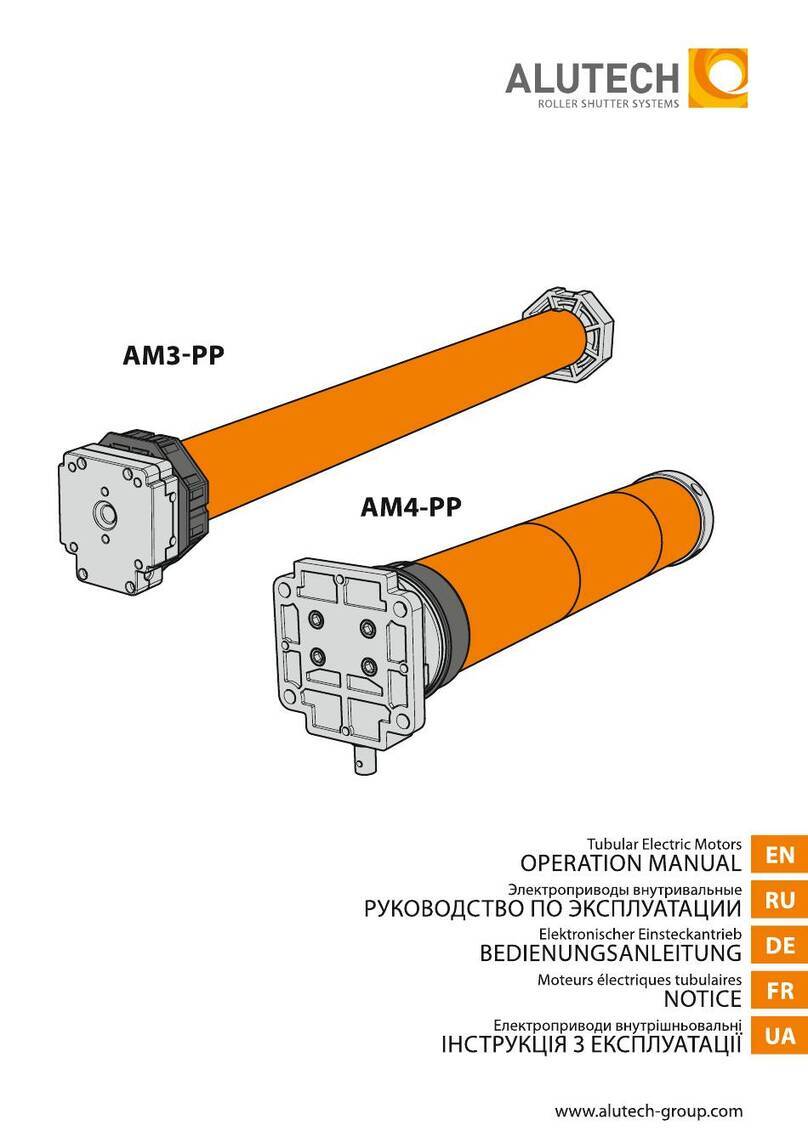
Alutech
Alutech AM3-PP/140-07 Operation manual

Nice
Nice Era Quick Series Instructions and warnings for installation and use
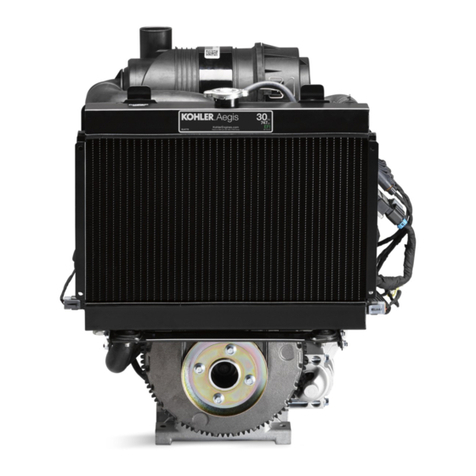
Kohler
Kohler Aegis ELH775 Service manual
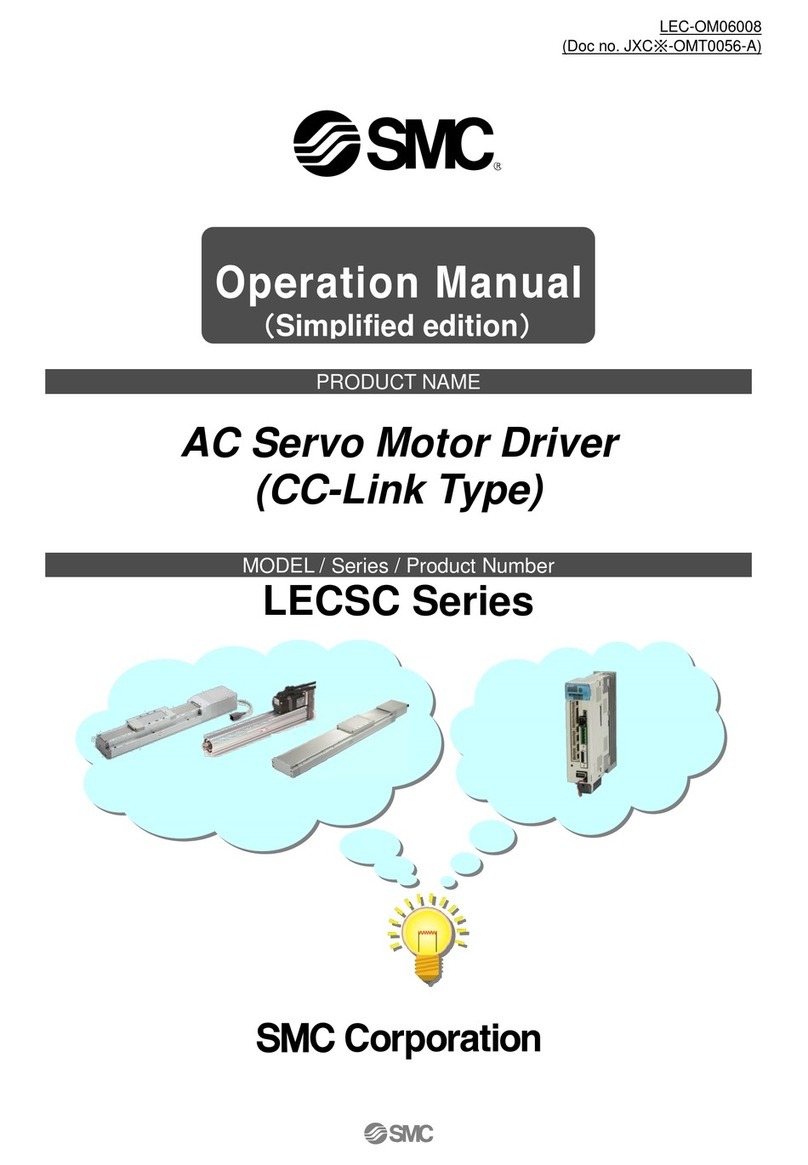
SMC Networks
SMC Networks LECSC Series Operation manual
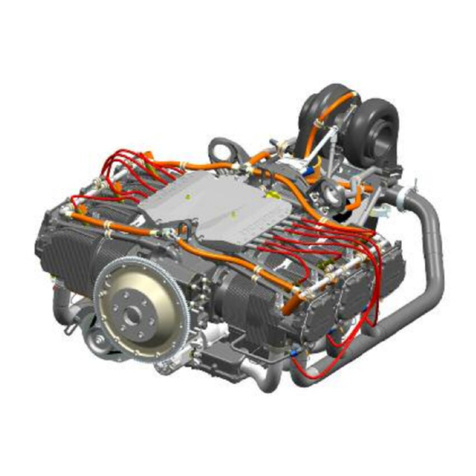
Lycoming
Lycoming TEO-540-C1A Maintenance manual
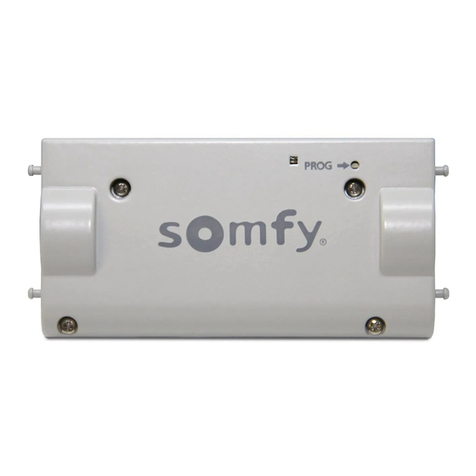
SOMFY
SOMFY Tilt Only 50 RTS Central Pack instructions
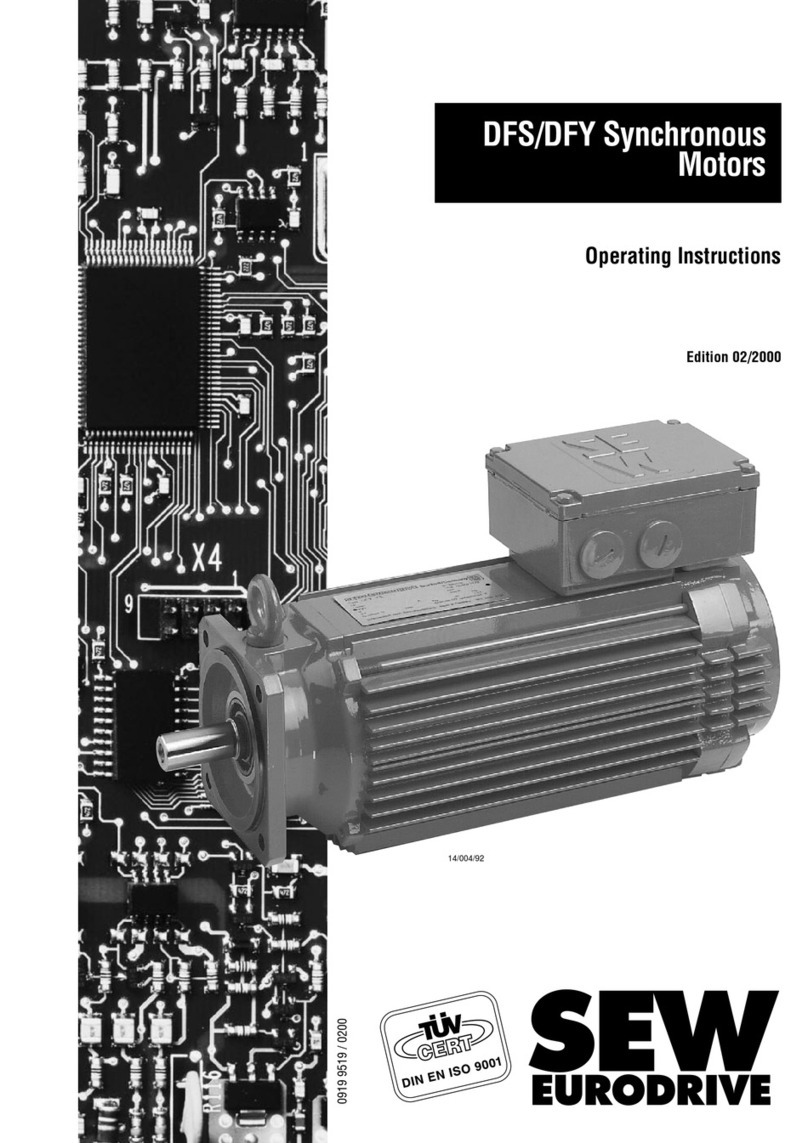
SEW-Eurodrive
SEW-Eurodrive DFS Series operating instructions

Briggs & Stratton
Briggs & Stratton Vanguard 290000 Operating & maintenance instructions

King Canada
King Canada KCG-65 instruction manual
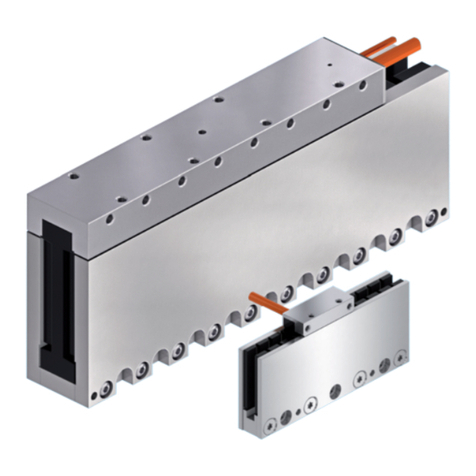
REXROTH
REXROTH MCL operating instructions
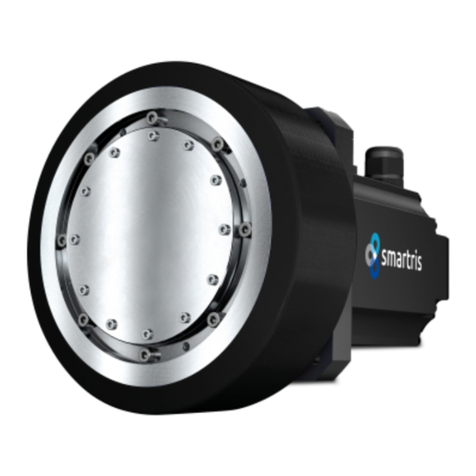
Sumitomo Drive Technologies
Sumitomo Drive Technologies Smartris Maintenance manual

Jamara
Jamara Q7 Standard instructions
